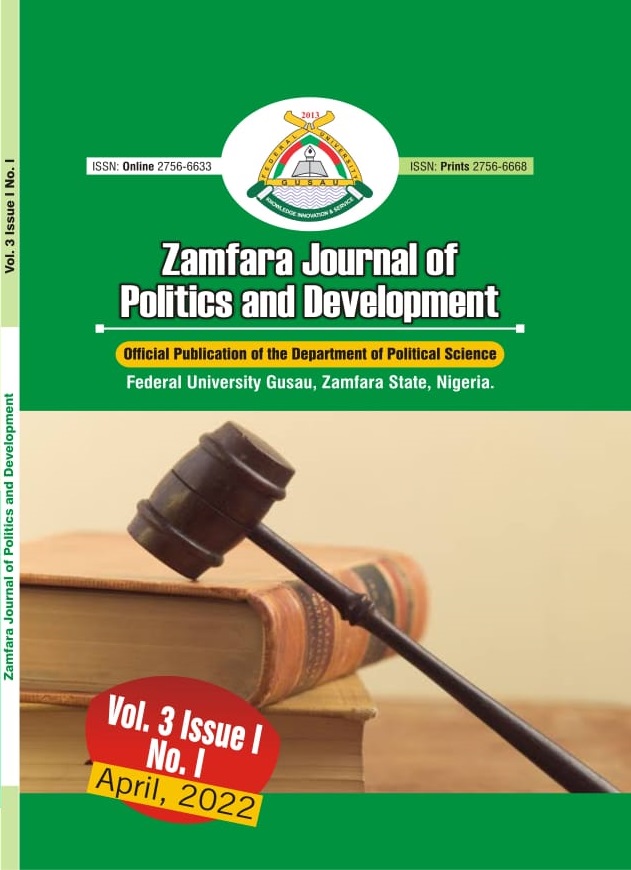AN APPRAISAL OF THE IMPACT OF ANTI-CORRUPTION AGENCIES ON THE DEVELOPMENT OF THE NIGERIAN ECONOMY
Keywords:
Anti-Corruption Agencies, Corruption, ICPC, EFCC, DevelopmentAbstract
The shortcomings in the efforts at curbing corruption in Nigeria had been prevalent. The record of success at various levels of government had fallen short of expectations, considering the proportions of funds the country loose to swindlers, contract scams and money laundering. These huge funds ordinarily if channelled adequately and managed accordingly in the absence of corruption were to stimulate the economic development of the Nigerian environment. However, the reverse is the case as corruption has come to be a part of the Nigerian process while threatening and retarding the economic development of the nation, despite the presence of notable anti-corruption agencies like the Independent Corrupt Practices and other Related Offences Commission (ICPC) and the Economic and Financial Crimes Commission (EFCC). The journey ‘so far’ of the above mentioned anti-corruption agencies (i.e. ICPC and EFCC) in curbing the menace of corruption and ensuring the growth and development of the Nigerian economy is the central focus of this study. The study employs a systematic qualitative content analysis of secondary materials such as textbooks, internet materials, reports, newspapers and magazines, journal articles etc. The findings from the study revealed that the fight against corruption via the anti-graft agencies can only be won if the government decides to objectively allow the agencies to carry out their duties and responsibilities independently without interference. This is the most crucial way that the government can show its seriousness in winning the war on corruption through these anti-graft agencies. By so doing, the devastating effect of this evil called corruption would be minimised and the economy no doubt will witness positive changes and improvements to indicate the presence of economic development.
Downloads
Published
Issue
Section
License

This work is licensed under a Creative Commons Attribution-ShareAlike 4.0 International License.
Authors retain the copyright of their manuscripts, and all Open Access articles are distributed under the terms of the Creative Commons Attribution License, which permits unrestricted use, distribution, and reproduction in any medium, provided that the original work is properly cited.




